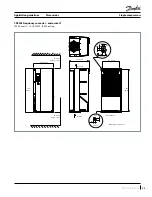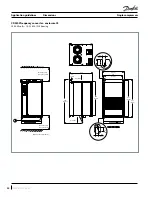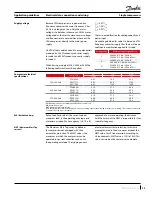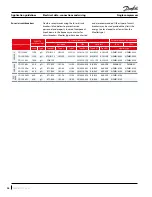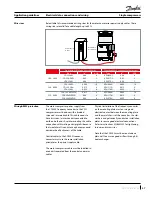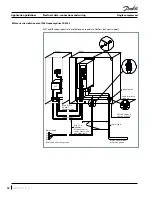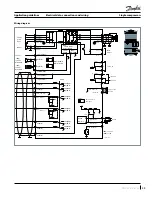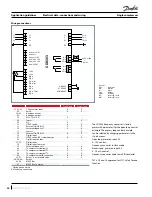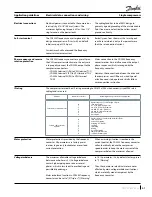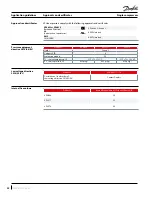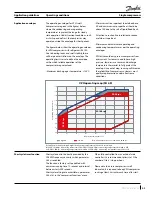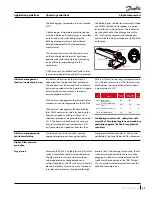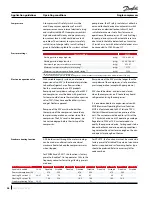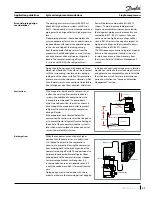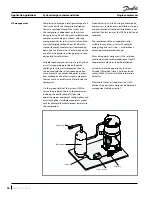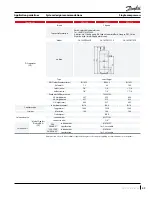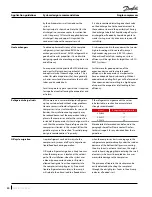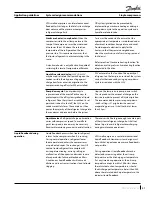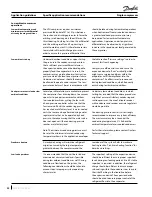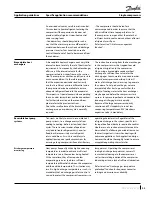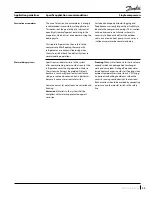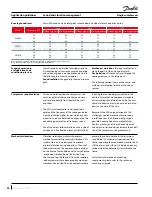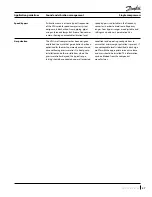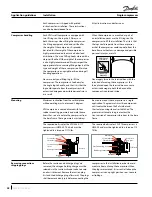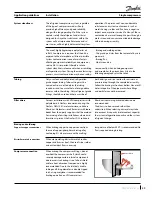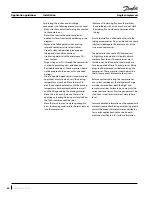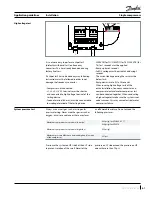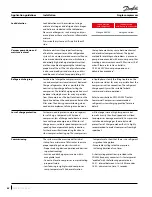
Application guidelines
47
FRCC.PC.023.A7.22
Single compressors
System design recommendations
The working pressure in systems with R410A is
about 60% higher than in systems with R22 or
R407C. Consequently, all system components and
piping must be designed for this higher pressure
level.
Proper piping practices should be employed to
ensure adequate oil return, even under minimum
load conditions with special consideration given
to the size and slope of the tubing coming
from the evaporator. Tubing returns from the
evaporator should be designed so as not to trap
oil and to prevent oil and refrigerant migration
back to the compressor during off-cycles.
In systems with R410A, the refrigerant mass
flow will be lower compared to R22/R407C
systems. To maintain acceptable pressure
drops and acceptable minimum gas velocities,
the refrigerant piping must be reduced in size
compared to R22 / R407C systems. Take care
not to create too high pressure drops neither
since in R410A systems the negative impact of
high pressure drops on the system efficiency is
stronger than in R22/R407C systems.
CDS303 frequency converter integrates a special
feature in the compressor functions in order
to improve and secure the oil recovery from
the system. Refer to “Oil Return Management”
section.
When the condenser is mounted at a higher
position than the compressor, a suitably sized
«U»-shaped trap close to the compressor is
necessary to prevent oil leaving the compressor
from draining back to the discharge side of the
compressor during off cycle. The upper loop also
helps avoid condensed liquid refrigerant from
draining back to the compressor when stopped.
For inverter applications with long lines it is
recommended to use an oil separator even if it
is only the condenser which is far away from the
unit.
Piping design must also be made with care in
order to make sure the remaining oil not trapped
Piping should be designed with adequate three-
dimensional flexibility. It should not be in contact
with the surrounding structure, unless a proper
tubing mount has been installed. This protection
proves necessary to avoid excess vibration, which
can ultimately result in connection or tube failure
due to fatigue or wear from abrasion. Aside from
tubing and connection damage, excess vibration
may be transmitted to the surrounding structure
and generate an unacceptable noise level within
that structure as well. For more information on
noise and vibration, see “Sound and Vibration
Management” section.
If the evaporator lies above the compressor, as
is often the case in split or remote condenser
systems, the addition of a pump-down cycle
is strongly recommended. If a pump-down
cycle were to be omitted, the suction line must
have a loop at the evaporator outlet to prevent
refrigerant from draining into the compressor
during off-cycles.
If the evaporator were situated below the
compressor, the suction riser must be trapped so
as to prevent liquid refrigerant from collecting at
the outlet of the evaporator while the system is
idle, which would mislead the expansion valve’s
sensor (thermal bulb) at start-up.
Essential piping design
considerations
Suction lines
Discharge lines
HP
13 ft/s or more
0.5% slope
To condenser
max. 13 ft
max. 13 ft
0.5% slope
U-trap, as short as possible
U-trap
13 ft/s or more
U trap, as short as possible
Evaporator
LP
26 to 40 ft/s
HP
LP
Condenser
3D flexibility
U Trap
Upper loop

